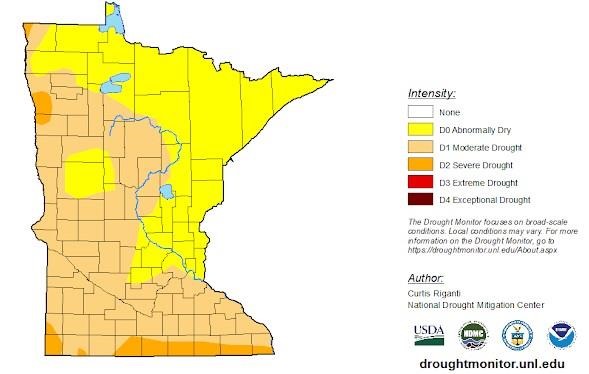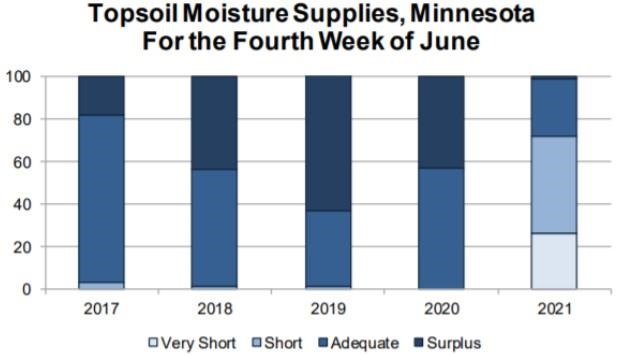By Anne Nelson and Taylor Becker

Last week, some irrigators throughout Minnesota were alerted to the possibility of water use restrictions for surface water appropriators in certain counties by the Minnesota Department of Natural Resources (MN DNR) due to the ongoing dry conditions. According to the 2017 agriculture census, 93% of irrigation in Minnesota came from groundwater sources while only 4% came from on-farm surface water (USDA NASS 2018 Irrigation and Water Management Survey). For most information on the water use restriction notice and resulting process, head to MN DNR’s Guidelines for Suspension of Surface Water Appropriation Permits.
Most of the state is currently categorized as in a moderate drought with some southern counties experiencing severe drought, according to the US drought monitor. Northeast Minnesota and parts of central Minnesota north of the Twin Cities are experiencing abnormally dry conditions as compared to years past.

Irrigation efficiency
Although these conditions may be unusual for this time of year, drought stress is not an unheard of crop condition in Minnesota. In many parts of the state, drought stress is managed with irrigation. With low precipitation surface water and groundwater, recharge in some areas has been affected. When groundwater and surface water supplies are low, irrigation efficiency becomes even more important.
Some things you can do to irrigate more efficiently are:
- Test sprinkler application uniformity and check for leaks
- Use soil moisture sensors to inform irrigation scheduling
- Use a form of irrigation scheduling like the checkbook method
- Low pressure conversion
Source : umn.edu